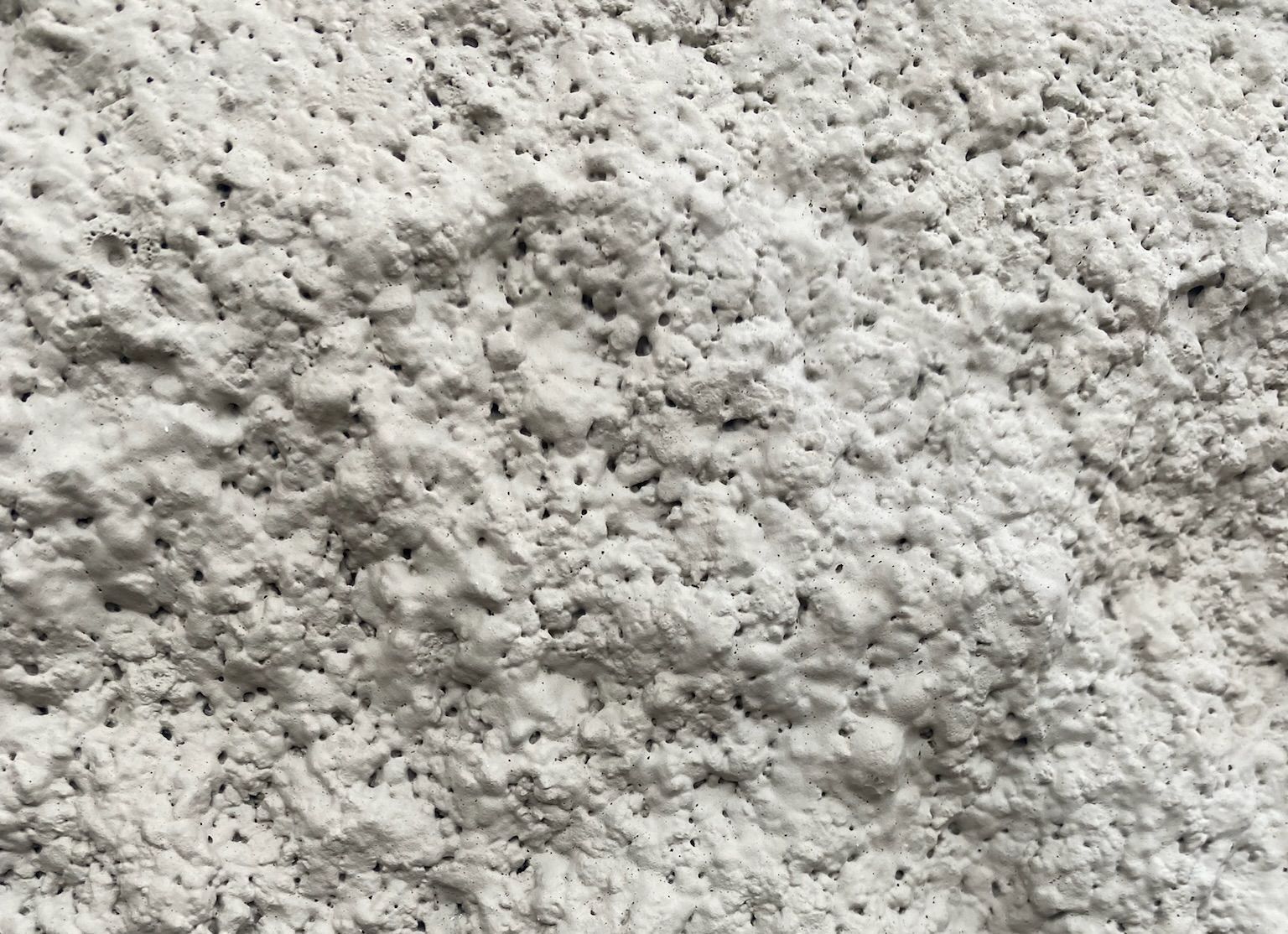Expert Masonry Repair and Maintenance
Venting Wet Parapet Walls
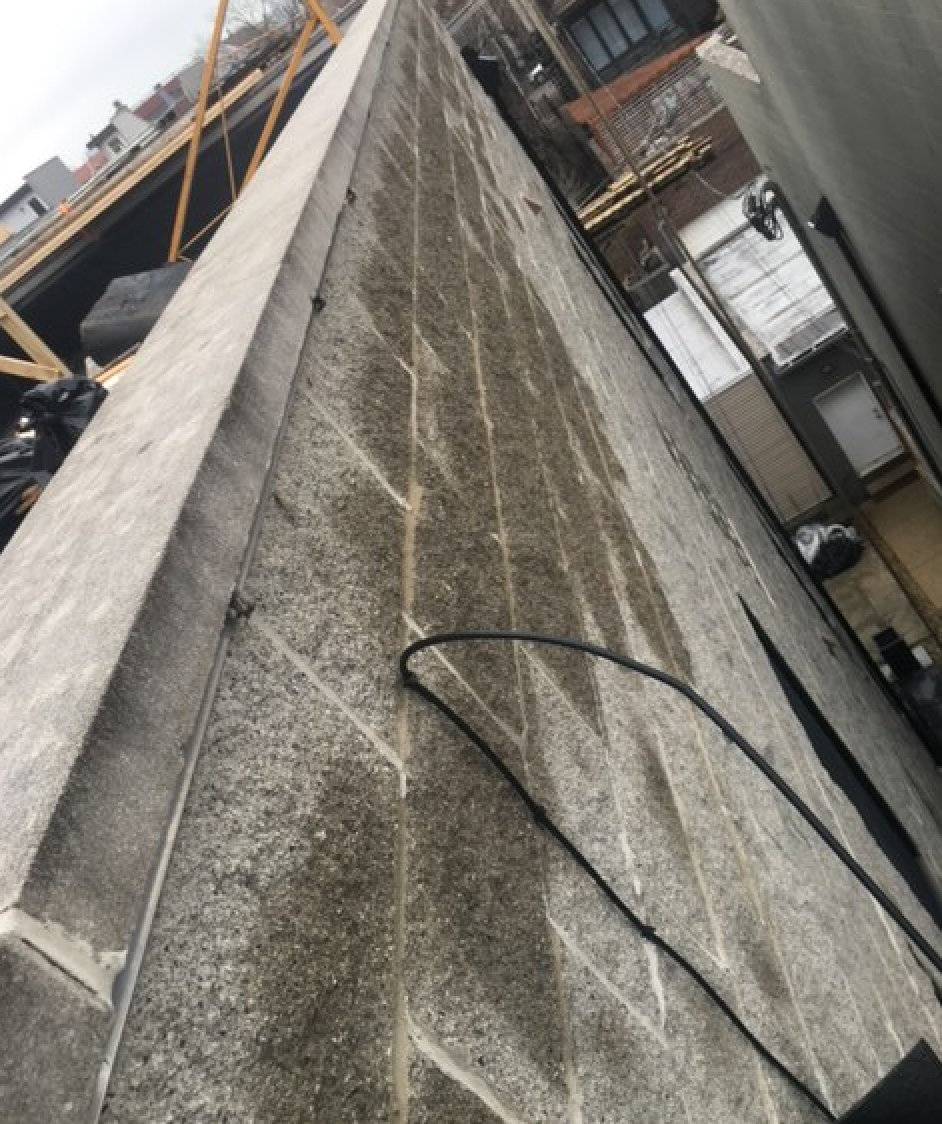
Water rushes toward the WickRight Capstone Vented Drip Edge the day after installation in Chicago's West Town neighborhood
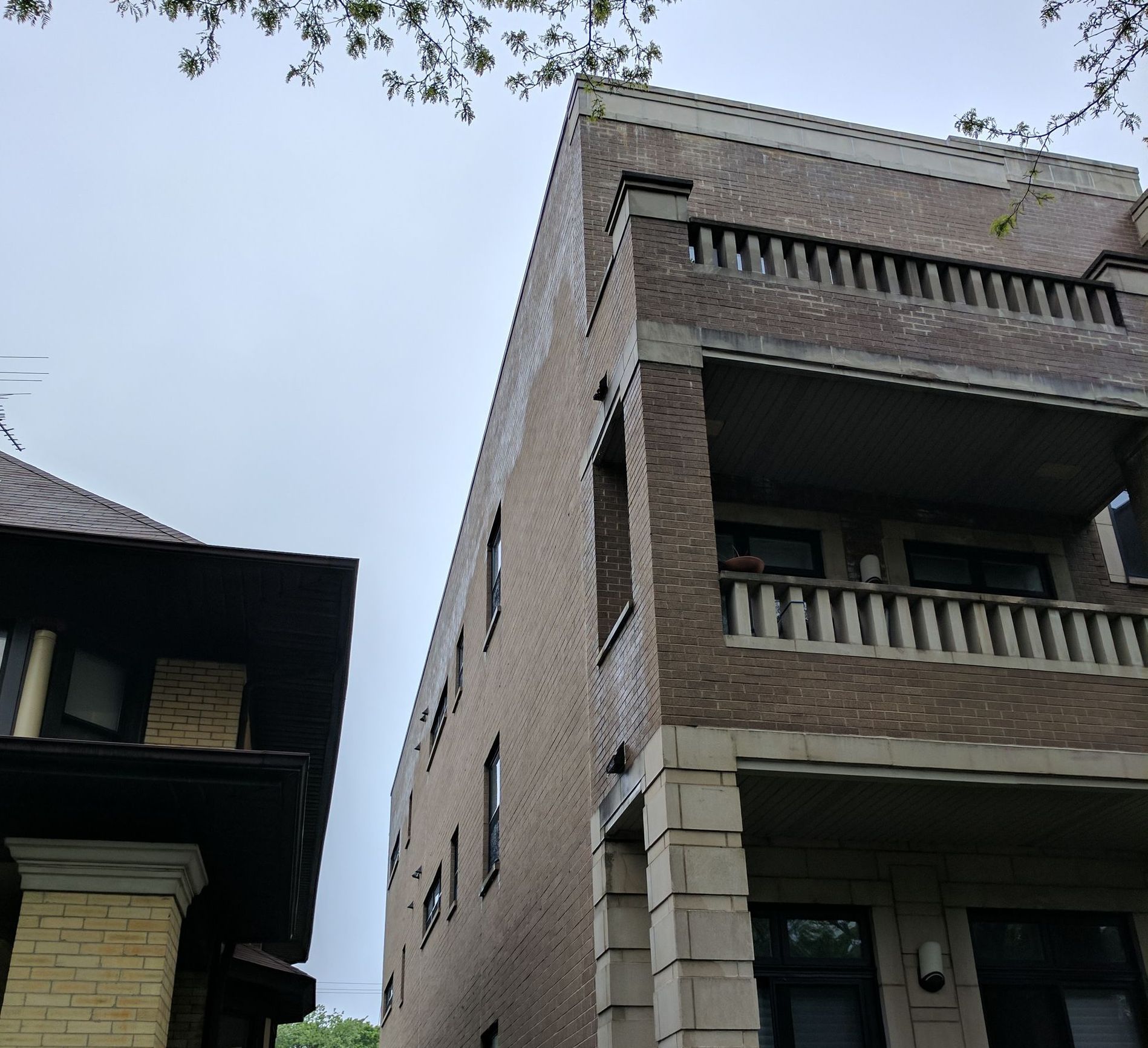
Moisture moving toward top of the building after WickRight Vented Drip Edge is installed in Chicago's Rogers Park neighborhood
Continued from the Home page
All masonry buildings require regular, professional maintenance, including caulking, spot grinding and re-pointing, which many people call tuckpointing.
All contemporary masonry buildings need professional masonry sealant applications to reduce moisture intrusion, especially Split Face Block and concrete block buildings, known in the construction industry as CMU. Contemporary masonry buildings are constructed with Portland cement based mortars. Portland cement was developed in the 1950's to make historic lime/sand mortars harden quickly.
Masonry buildings built prior to 1950 were constructed with Lime/Sand mortar, which absorbs moisture but also releases moisture back to the air, thus drying quickly. But mortars with Portland cement absorb AND trap water, therefore these walls do not typically dry before the next rain, which is one of the reasons contemporary buildings need to be sealed.
Limestone and Renaissance stone (pre-cast concrete - looks like limestone) require extra care to reduce moisture intrusion. Pre-cast concrete is extremely porous and one of the main entry points for moisture intrusion in newer construction. It's used everywhere you would expect to see/think you see limestone – parapet capstones, cornices, decorative details within brick work and around windows and doors.
We specialize in solving moisture intrusion issues involving split face block, Renaissance stone and pre-cast concrete details.
We install WickRight Passive Ventilation® devices on parapet walls whenever it is appropriate. WickRight parapet vents are designed to work under capstones, metal copings and clay copings. WickRight vented flashings protect parapet walls from absorbing additional moisture from the top and allow wind to flow across the top of the parapet wall.
The WickRight Capstone Vented Drip Edge and Vented Receiver Clip specifically fixes parapet walls with Capstones on top. It sheds bulk water (rain) and exhausts vapor from the parapet like a linear chimney. It is installed between the capstone and parapet wall, wind blows through the vented drip edge creating suction that draws out and directs moisture vapor up and out of the walls.
Over the years, we have observed moisture moving all the way from the foundation to the parapet in buildings constructed without through-wall flashings or poorly installed through-wall flashings. Industry standards require through-wall flashings to be installed at each story level, however, this guideline is not always followed.
Click here for specific information on Venting, Flashing and Drying Out Wet Parapet Walls
Flashing Renaissance Stone
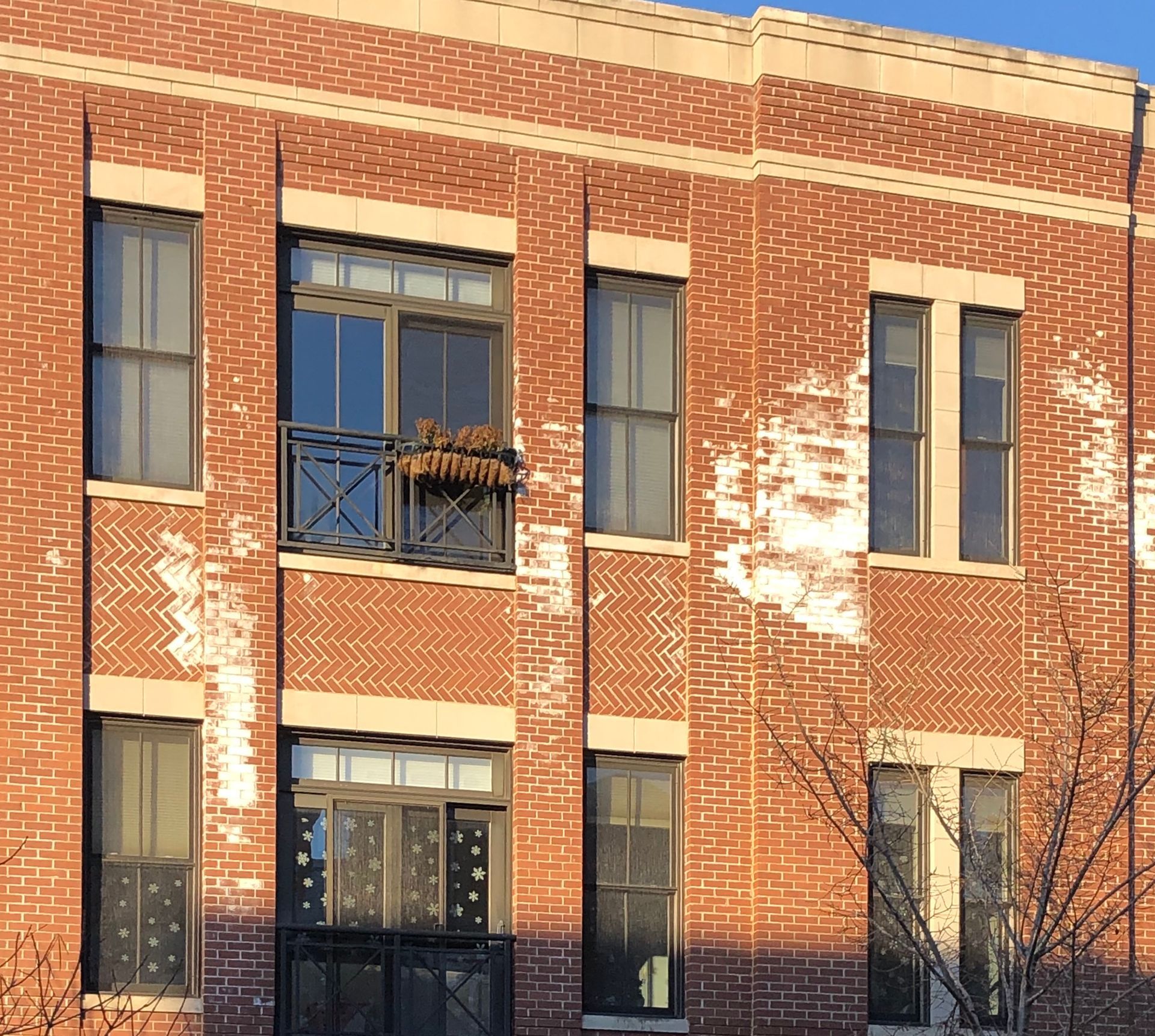
Above: Efflorescence on brick columns below Renaissance Stone cornice, decorative "stone" band in brick work and near "stone" window headers.
Below: To limit the water intrusion, we designed the vented sheet metal cornice to cover the entire "stone" cornice.
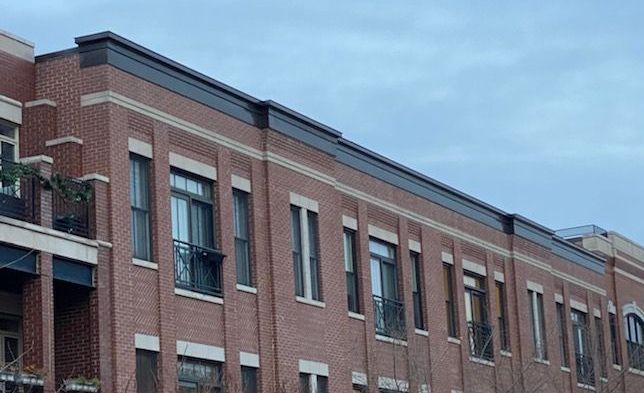
Renaissance Stone details, like the cornice in the picture on the left, require extra care. Renaissance Stone is actually pre-cast concrete. In our experience, masonry sealants do not adequately seal this material.
This cornice was saturated and causing leaking into the roof system, as well as interior damages, and contributing to efflorescence along the entire length of the front of the building.
If your building has pre-cast concrete details that are structural and causing moisture intrusion issues, Bob can design and fabricate attractive custom flashings, including vented sheet metal cornices like the one shown below, that not only protect your building, but add to the building's curb appeal.
Some decorative "stone" details that are not structural can be removed and we can install flashings behind the "stone" to direct any absorbed water to the exterior of the building.
More custom flashing pictures and information to come...
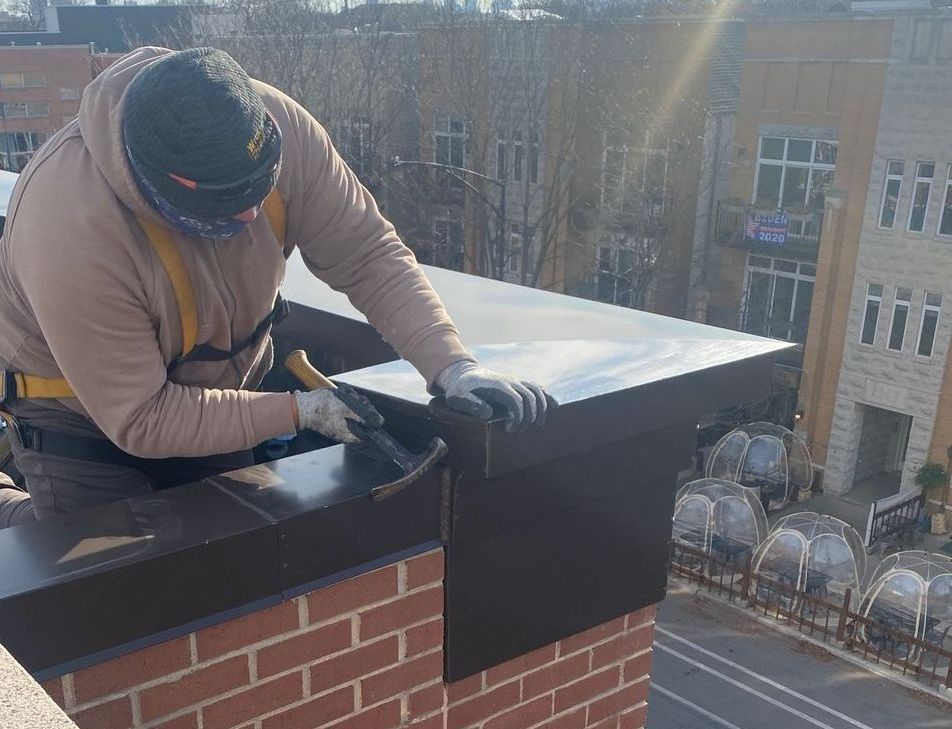
Beautiful custom vented sheet metal cornice adorns and keeps this 10-unit building in Lakeview, IL dry as a bone.
Leaking Wall - Pinholes in elastomeric paint application on Split Face Block Building in Chicago's Rogers Park neighborhood
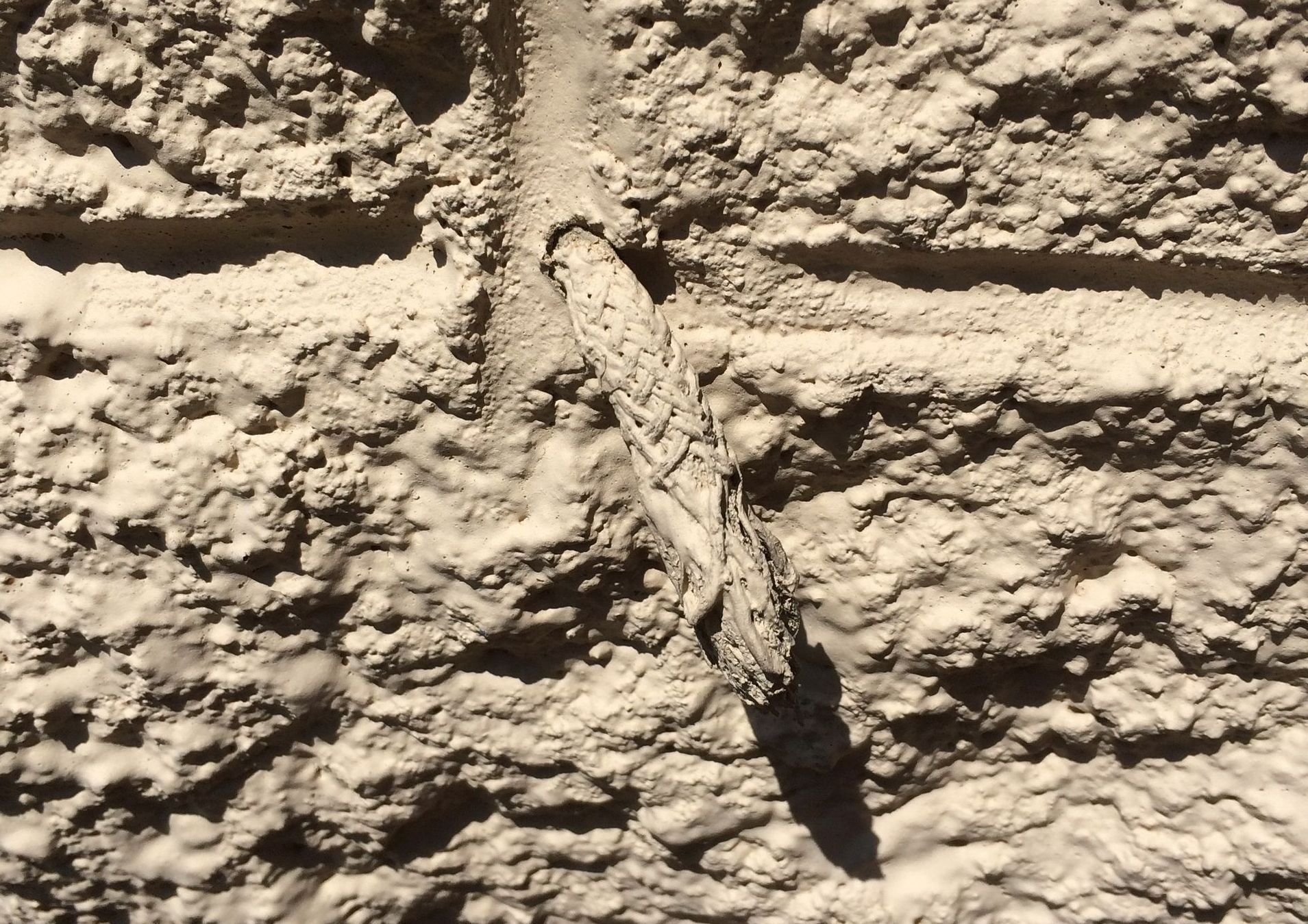
Weep rope for wicking moisture from masonry rendered useless by careless elastomeric sealant application, Everywhere, Chicago, IL
Masonry sealants come in many forms, the most common being clear siloxane-based sealants and tinted elastomeric paints.
When we seal a building that has never been sealed, we always suggest using the clear siloxane-based sealants. We use and recommend only Chemtrete and Prosoco brands. Prior to applying sealants, we schedule the manufacturer's technical representative to come to the jobsite and to specify the correct amount of sealant to be applied. We then follow the installation specifications and never cut corners.
When we're finished, we schedule the tech rep to visit the job site to verify that the installation was completed according to specification. If the building is a commercial property, it may meet the manufacturer's qualifications for granting a warranty – which can be as long as 20 years on siloxane-based sealant applications. Commercial properties typically have more than 8 units, some units being business units.
The good news is that while a smaller residential building will not be granted a sealant warranty, the sealant can be expected to perform for the same number of years.
If a building was previously sealed with elastomeric paint, it needs to continue to have elastomeric paint applications every 10 years or so. Elastomeric paint is NOT latex exterior paint. It is much thicker and has a rubbery quality. When applied properly elastomeric paint will seal Split Face Block.
It is important to apply enough elastomeric paint to fill all pin holes, cracks and crevices, while small, these imperfections allow a great deal of water to enter the wall. However, it is also important to avoid covering weep ropes, which renders the weep ropes useless. Weep ropes are installed as the building is built and are meant to "weep" moisture to the exterior.
All that said, it is important to hire a qualified masonry sealant installer to ensure the sealant is applied properly.
More Masonry Sealant information to come...
Parapet Rebuilding
New pictures to come...
Parapet Rebuilding information to come...
Spot Grinding & Re-pointing
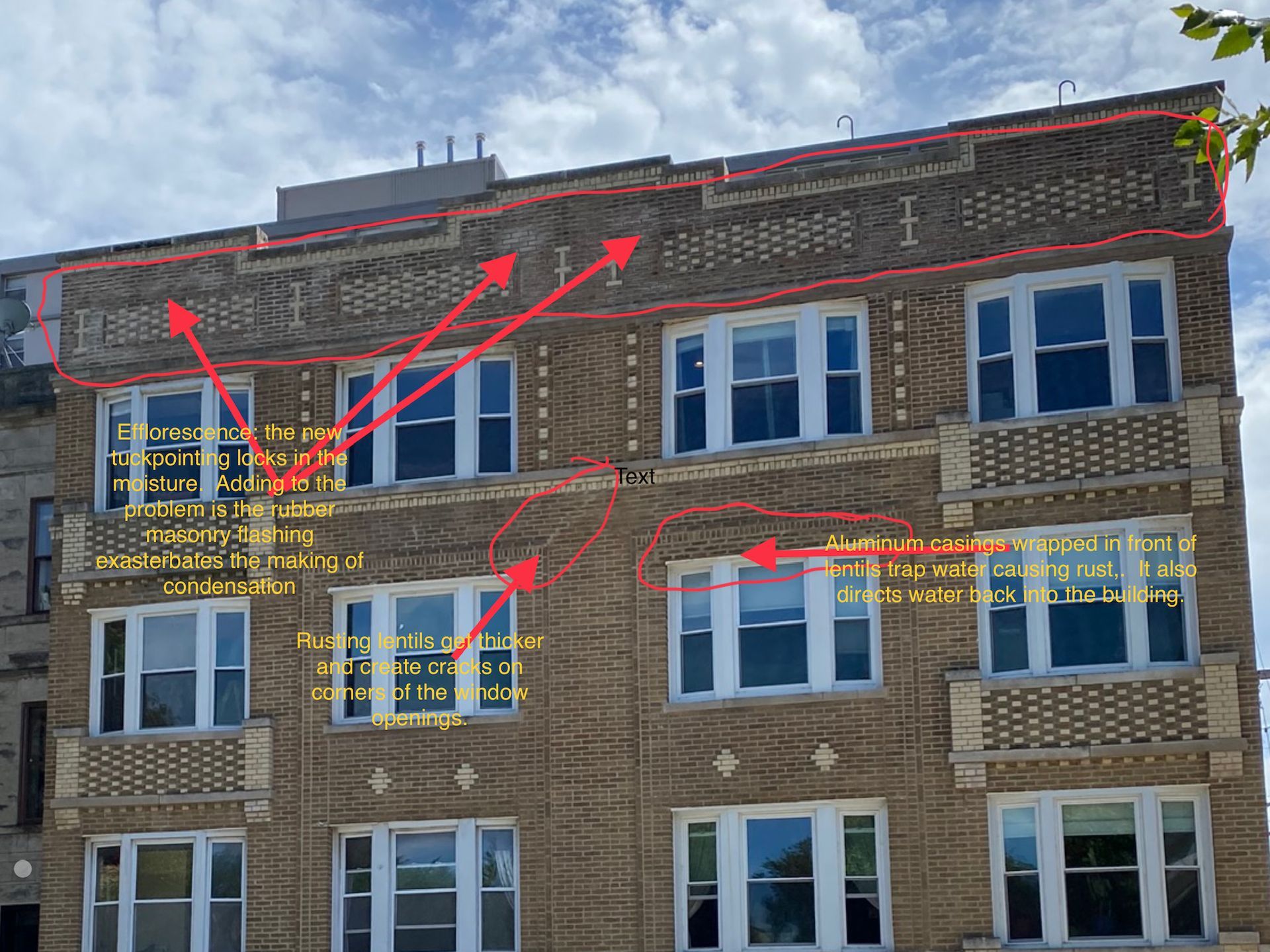
Wet historic building in Chicago's Uptown neighborhood just had rubber mason's flashing installed under the capstones and spot grinding and re-pointing of the parapet wall. We pulled the capstones and installed WickRight Vented Drip Edge, problem solved.
Spot grinding and repointing information to come...
Expansion Joint Replacement
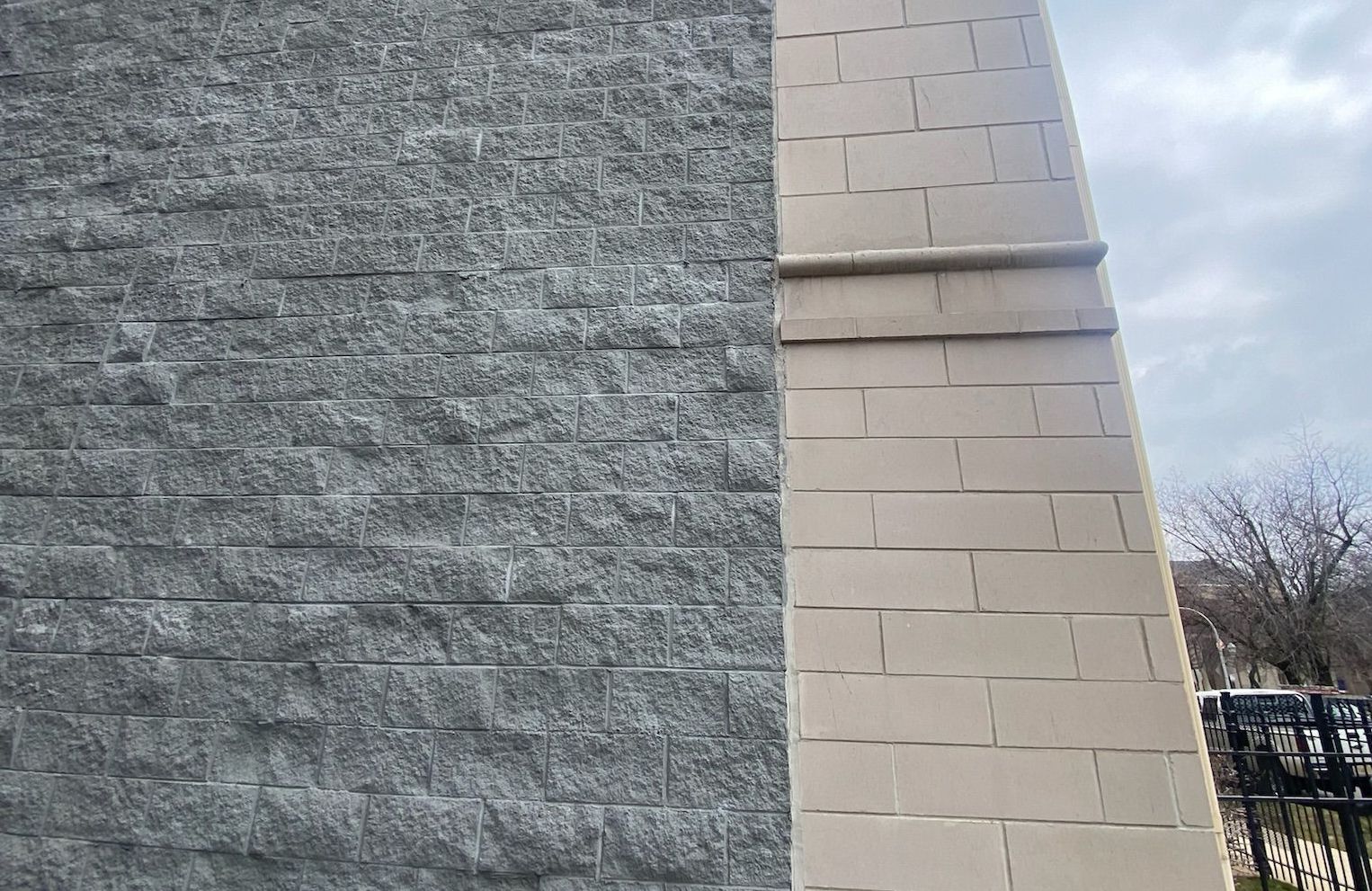
Transition for Split Face Block to Renaissance Stone clad wall in Bronzeville neighborhood, Chicago, IL
Expansion Joint Replacement information to come...

